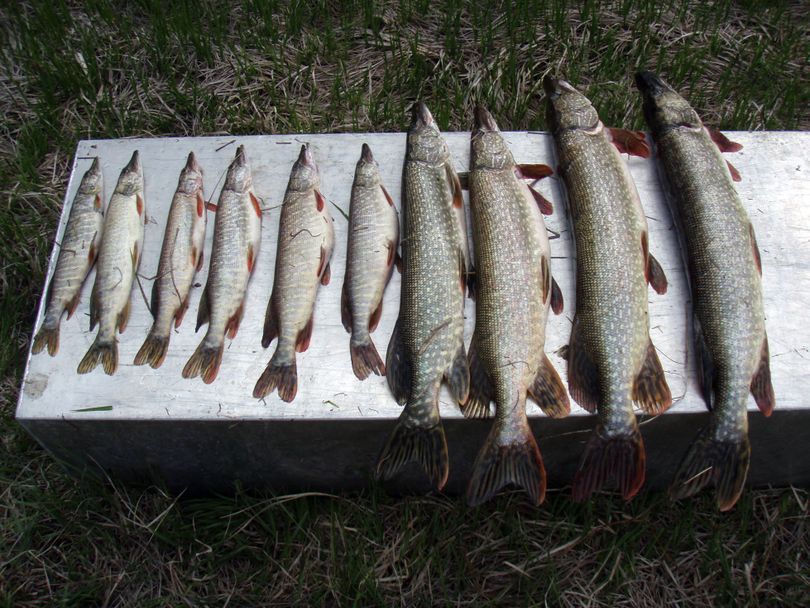Tonight: Last of two public meetings on Pend Oreille River northern pike

FISHING -- The Washington Department of Fish and Wildlife and the Kalispel Tribe of Indians Natural Resources Department will hold the second of two area public meetings tonight to discuss non-native northern pike in Pend Oreille River and other Eastern Washington waters, and take public input on options to control them and minimize their impacts on native fish.
A pair of Sunday Outdoors stories detailed the dilemma with the boom fishery and the plans for more gillnetting surveys, which start next week.
Tonight's meeting starts at 6 p.m. at Center Place, 2426 N. Discovery Place, in Spokane Valley
Read on for more details about the meetings and surveys that are monitoring the boom of pike in the river.
Recent WDFW and KNRD surveys have documented a rapid increase in the number of northern pike in the Pend Oreille River, and a reduction in forage fish such as native minnows, whitefish and suckers, as well as non-native sportfish such as largemouth bass.
Left unchecked, northern pike could severely impact other fish—including native westslope cutthroat and bull trout—and undermine efforts to restore native fish populations in the river system.
Options under consideration by WDFW and KNRD to control pike on the Pend Oreille River include netting fish and donating them to local food banks, sport-reward fisheries, and fishing tournaments targeting pike, according to Bill Baker, a WDFW district fish biologist in Colville.
The Pend Oreille River’s northern pike are believed to have originated from illegal stocking in the Clark Fork River system in western Montana. The fish migrated downstream to Lake Pend Oreille, then into the Pend Oreille River in Idaho and Washington.
The first pike in the Pend Oreille River was captured in a 2004 scientific survey, although they have been reported by anglers since the late 1980s. Pike are currently found throughout river’s Box Canyon Reservoir and Boundary Reservoir.
“Our immediate concern is predation on native westslope cutthroat and bull trout,” said Baker, “but native salmon, steelhead and other species also could be at risk if pike migrate downstream and establish populations in the Columbia River. We’re also concerned about northern pike populations establishing in other Washington waters.”
KNRD Fisheries and Water Resources Director Joe Maroney said the tribe is equally concerned, and is determined to prevent the spread and further illegal introduction of northern pike.
“We want to reduce the number of pike and we’re working closely with the Department of Fish and Wildlife to develop the best management strategy,” Maroney said.
WDFW and KNRD fish biologists will conduct population-assessment surveys in late April through May to determine the abundance of northern pike and other fish species in Box Canyon Reservoir.
